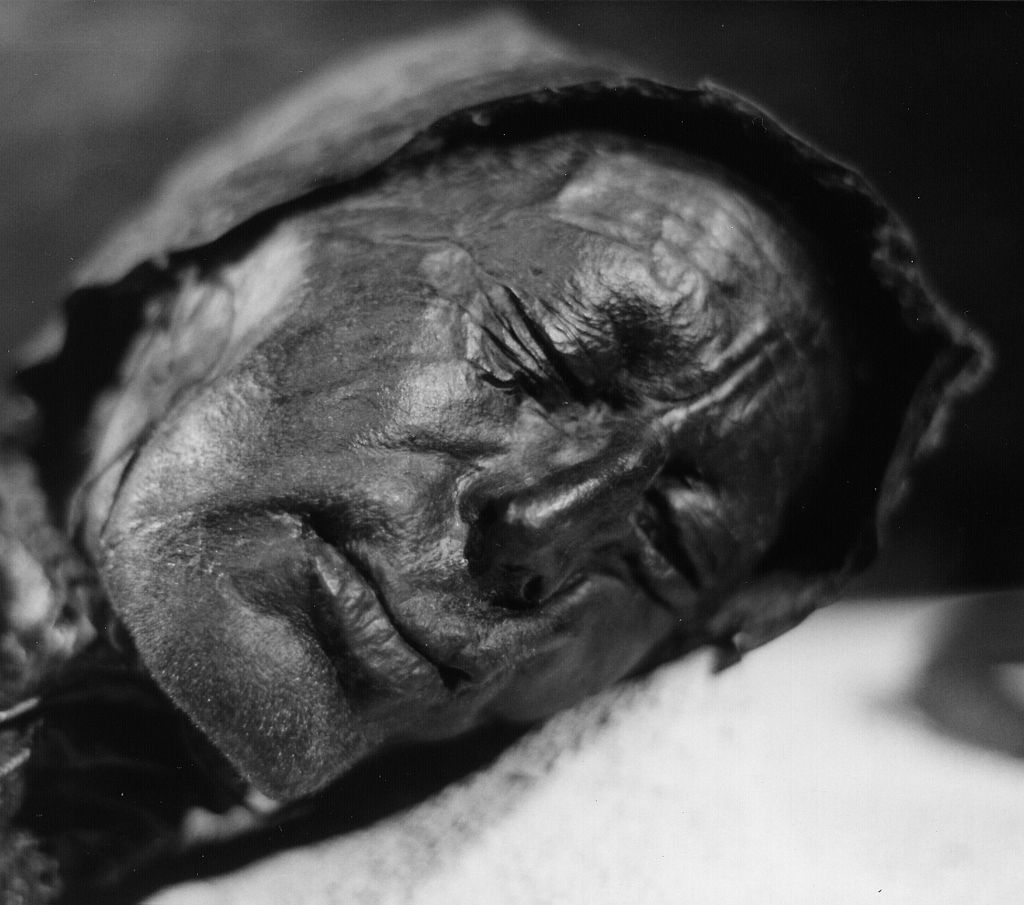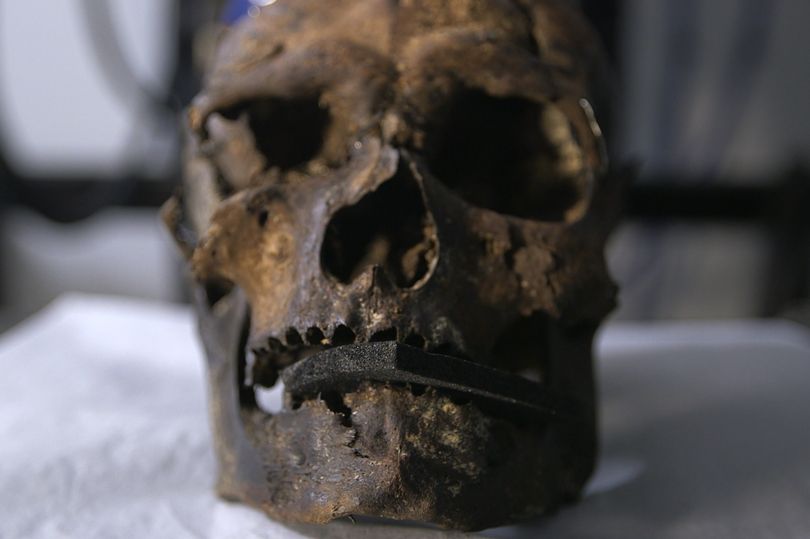In August 1958 workmen digging peat in the Astley Bog area of Chat MossLarge area of peat bog that makes up 30 per cent of the City of Salford, in Greater Manchester, England, near Worsley in Greater Manchester, discovered a severed head and called the police. It was initially believed that the head had been in the bog for less than a year, and so a search was conducted for more remains, but nothing was found. After X-rays and chemical tests, it was determined that the head had been in the bog for at least 100 years. An inquest was held into the man’s death, at which the coroner returned an open verdict, and the head was put in the care of the Manchester Medical School.[1]
The discovery of the nearby Lindow Man in 1984 generated renewed interest in bog bodies
Human cadaver that has been naturally mummified in a peat bog., and in 1987 what had become known as Worsley Man was re-examined. The inspection revealed a wound behind the right ear, fractures to the top of the skull, and a cut through the vertebra where he had been decapitated. The remains of a garotte were also found around his neck, all of which was suggestive of a ritual killing rather than an accidental death, perhaps related to the Celtic cult of the severed head.[1] X-ray imaging also revealed a sharp pointed object buried in Worsley Man’s neck, perhaps the snapped-off tip of a ceremonial spear.[2]
The condition of the tooth pulp suggests that Worsley Man was 20–30 years old at the time of his death, which radiocarbon dating of a fragment of preserved soft tissue indicated was during the late Iron Age, some time around 120 AD, identifying him as a Romano-British Celt;[1] most European bog bodies date from about 100 BCE to 400 AD, roughly corresponding to the Roman period.[3] The tannin and other chemicals in sphagnum mosses, which comprise most of the mosses in Chat Moss,[4] act to preserve skin, hair, internal organs, and textiles.[3]
Worsley Man is now in the care of the Manchester Museum
Largest university museum in the UK, founded in 1867..[1]

